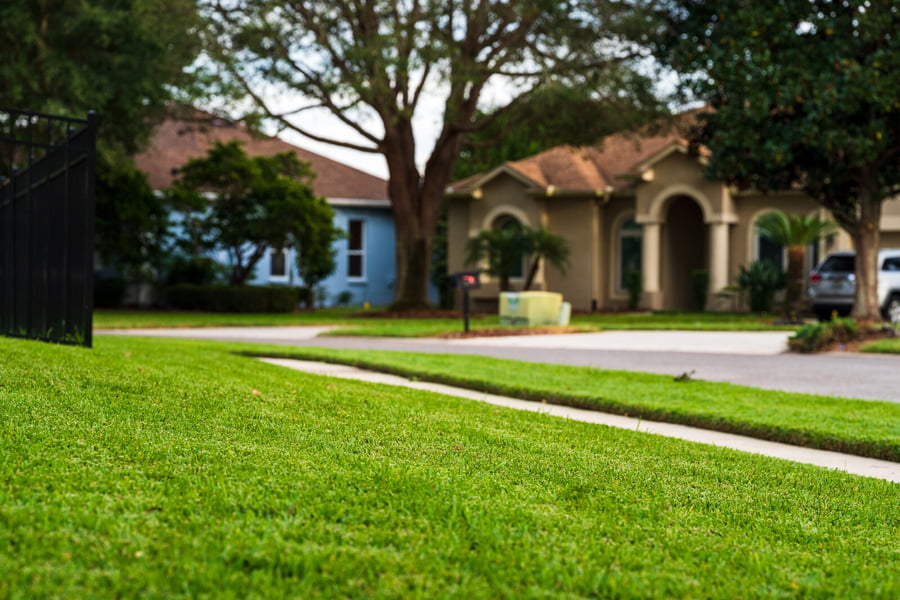Lawn owners often struggle with overwatering, a common mistake that can damage sod and compromise its health. Overwatered sod leads to a multitude of issues, including yellowing, thinning, shallow root growth, and disease susceptibility. If you find yourself dealing with an overwatered lawn, don’t despair; with the right steps, you can restore its lush greenery. This comprehensive guide will lead you through the process of identifying and correcting overwatering, ultimately helping you bring your sod back to life.

Image: www.evergreenseeds.com
Identifying Overwatered Sod
Overwatered sod exhibits several telltale signs that can help you identify the problem. Look for yellowish, waterlogged grass that feels spongy or squishy underfoot. You may also notice stunted growth, thin grass blades, and a lack of deep root development. Additionally, overwatered sod is more prone to fungal diseases such as brown patch, Pythium blight, and gray leaf spot, which manifest as brown or discolored patches.
Adjusting Watering Frequency and Duration
The primary solution for overwatered sod is to adjust your watering schedule. Begin by reducing the frequency and duration of watering. Instead of daily watering, switch to a schedule of 2-3 times per week, depending on the weather conditions. Avoid watering during the hottest part of the day, as this can lead to rapid evaporation. A deep watering, where you soak the soil thoroughly, is more beneficial than frequent, shallow watering. Aim to wet the soil to a depth of 6-8 inches, allowing the roots to establish deep connections and improve drought tolerance.
Aeration and Dethatching
Aeration and dethatching are essential practices for overwatered sod. Aeration involves poking holes in the soil to improve drainage and encourage root growth. This allows water and oxygen to reach the roots more effectively. Dethatching removes the layer of dead grass and other organic matter that accumulates on the soil surface, preventing water and nutrients from reaching the roots. Both aeration and dethatching can be performed using specialized equipment available at most hardware stores.

Image: www.groundsource.pro
Fertilization and Soil Amendments
Fertilizing overwatered sod can provide much-needed nutrients to help the grass recover. Choose a slow-release fertilizer with a balanced N-P-K ratio to provide a steady supply of nutrients over time. Avoid overfertilizing, as this can further stress the grass. In addition, consider amending the soil with organic matter like compost or peat moss to improve drainage and water retention. Organic matter loosens compacted soil, allowing water to infiltrate more easily, and holds water during periods of drought.
Disease Control
Overwatered sod is more susceptible to fungal diseases, as excess moisture creates a favorable environment for disease development. If you notice any signs of disease, such as brown or discolored patches, take prompt action to prevent further spread. Identify the specific disease affecting your lawn and follow appropriate treatment recommendations. Fungicides may be necessary to control the infection.
How To Fix Overwatered Sod
Conclusion
Overwatered sod can be a challenge, but with the right approach, you can restore its vitality and keep it thriving. By reducing watering frequency, aerating and dethatching the lawn, fertilizing appropriately, and controlling diseases, you can rectify the damage caused by overwatering. With patience and consistency, your lawn will regain its lush, healthy appearance, and you’ll enjoy a beautiful outdoor space once more. Remember, healthy sod not only enhances your curb appeal but also provides a range of environmental benefits, purifying the air, cooling the surroundings, and preventing erosion.